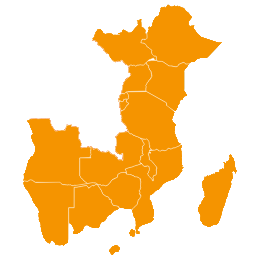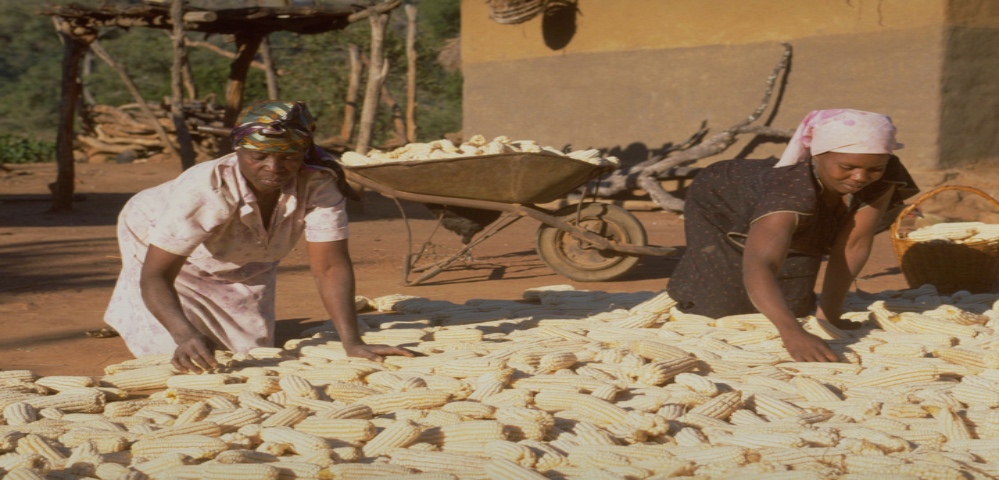Public-private-producer partnership (4Ps)
“I came back to my village with a strong take-away message: ‘the group is essential for the benefit of the individual’. I learned that only if farmers are trustworthy, we will be able to establish sustainable market relations with big off-taker.”
Paul Sanga Lusana, member of a group of 35 farmersBACKGROUND
In rural areas without strategic linkages to markets, most smallholders resort to using intermediaries, who often take advantage of smallholders. By organizing farmers into groups and creating connections with private investors and public services within a consortium, the 4Ps approach strengthens agricultural value chains.
WHAT’S INVOLVED
Farmers’ organization: Establishing smallholder producers’ groups facilitates access to financial services and allows for collective marketing, which in turn significantly increases farmers’ profits.
Value chain platforms and consortia: They are key to coordinating different stakeholders, such as farmers input suppliers, buyers and financial institutions.
EXPLORE THIS SOLUTION
The Marketing Infrastructure, Value Addition and Rural Finance Support Programme can:
- Offer a road map for farmer empowerment and developing farmer’s organizational capacity
- Attract private-sector investment by reducing the transaction costs of working with individual smallholder producers

Countries involved
United Republic of Tanzania
Project partners
Prime Minister’s Office, Ministry of Agrictulture, Ministry of Agriculture, Natural Resourses, Livestock and Fisheries in Zanzibar, African Development Bank, Tanzania Agricultural Development Bank
Project dates
2010 – 2020
Share this solution
Bookmark this solution
BookmarkShow Full Solution
Summary
The Marketing Infrastructure, Value Addition and Rural Finance Support Programme (MIVARF) is a seven-year programme aimed at supporting sustainable and profitable links between smallholders and markets in Tanzania. Through the 4Ps approach, the programme organizes smallholder producers into groups and cooperatives, teaching negotiation skills and building trust to reduce transaction costs with private investors.
Challenge/Problem
In the absence of strategic market linkages, most smallholders push products to the market based on comparative or competitive advantages. In this situation, smallholders are not informed about or responsive to market needs, instead taking an opportunistic and uncoordinated approach to marketing their products. This organization of value chain partners does not lend itself to delivering win-win outcomes for diverse actors along the chain.
Solution
The consortium model is an inclusive agribusiness development initiative that involves a 4Ps arrangement in the form of a trading platform that pulls all the actors in the value chain into a mutually beneficial network. Through the platform, actors are better informed and more responsive to market needs. They also have opportunities to improve their service delivery and position themselves to profit from business knowledge and experience in the sector.
The platform brings together value chain actors whose profitability and growth challenges (for example, a lack of access to timely and quality finances, inputs or produce markets) would otherwise have limited their access to competitive markets
Consortium members organize pre-season meetings to establish market requirements, including inputs, finance and produce market requirements. They then sign memorandums of understanding or contracts to solidify their relationships. Follow-up meetings are conducted during the season to ensure agreed objectives are being met as expected, or to make any necessary adjustments. End-of-season meetings then allow consortium members to reflect on performance and prepare for the next season. The consortiums include lead firms, input suppliers, financial partners and smallholder farmers.
Results
The achievements and results of the consortium model include:
-Increased enrolment of smallholder farmers: More smallholder farmers are participating in the consortium arrangement. For example, the number of onion farmers in the Karatu Onion Consortium increased from 4,429 in the 2016/17 season to 5,646 in the 2018/19 season.
-Increased sales volume: Sales of red onion marketed by consortiums increased by 60 per cent, and sales of maize increased from 17,674,040 kilogrammes in 2016/17 to 24,605,021 kilogrammes in 2018/19.
-Improved profitability: Economies of scale increased unit margins and improved competitive access to inputs and produce markets. For example, between the 2016/17 and the 2018/19 seasons in the southern zone, the cost of producing one kilogramme of paddy decreased by 35 per cent. There was an increase of more than 100 per cent in the profit margin in the same period.
-Increased access to affordable finance Financial institutions have managed to develop products suitable for actors participating in the consortium. For example, Vision Fund Tanzania developed a loan package for small groups of five farmers with no collateral. The arrangement helped 68 paddy farmer groups to acquire loans amounting to US$45,000 in the 2017/18 season.
Lessons Learned/Potential for replication
Lessons learned about the consortium model include that:
- Trust is key for the success of the consortium.
- The incentives for all involved should be clear from the outset.
- Value chain financing, especially for produce bulking, is key to ensuring access to productive access and the volumes that will be traded.
- Stakeholders should understand their roles and responsibilities in the consortium.
- Dependence on rain-fed agriculture can compromise anticipated production.
Next Steps
To scale up the innovation, it is necessary to have willing lead firms, including off-takers and processors. The smallholder farmer organizations must also be willing to participate in the arrangement. There should be clear market opportunities and agreement on what the constraints are and what action needs to be taken. Business tools, including business plans and data collection instruments, are necessary for consortium actors to remain focused on their respective seasonal financial and marketing objectives. The facilitating agency should be able to customize its support in line with beneficiary requirements. For sustainability, ongoing monitoring and supporting of the relationships in the consortium is of the utmost importance.
Last update: 26/07/2021


